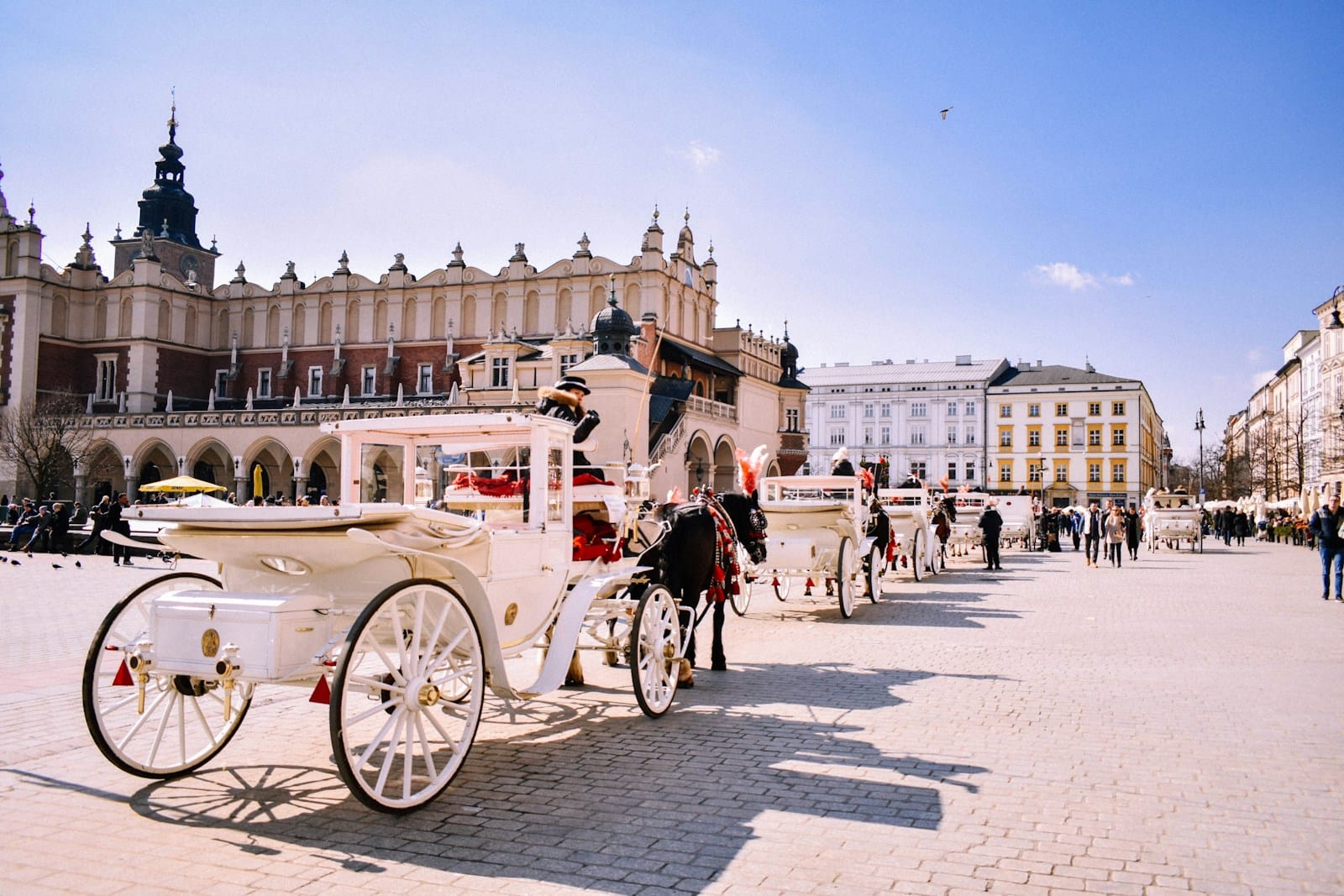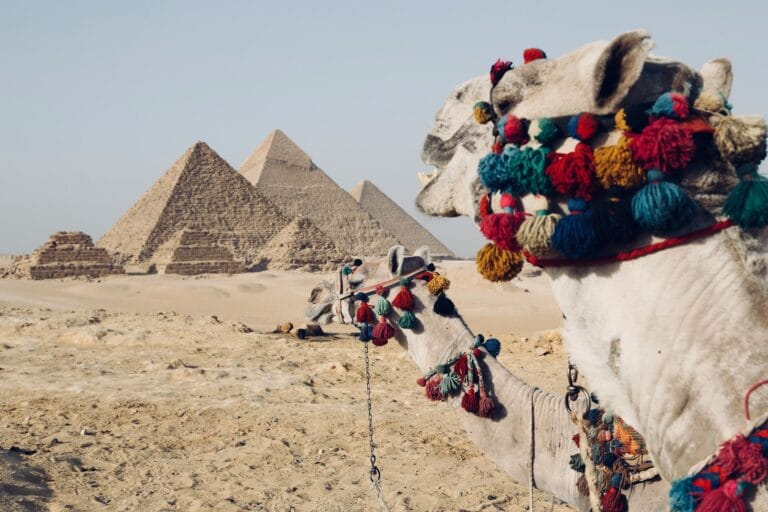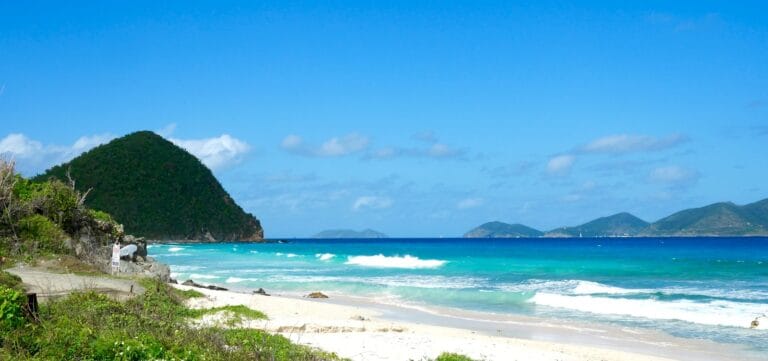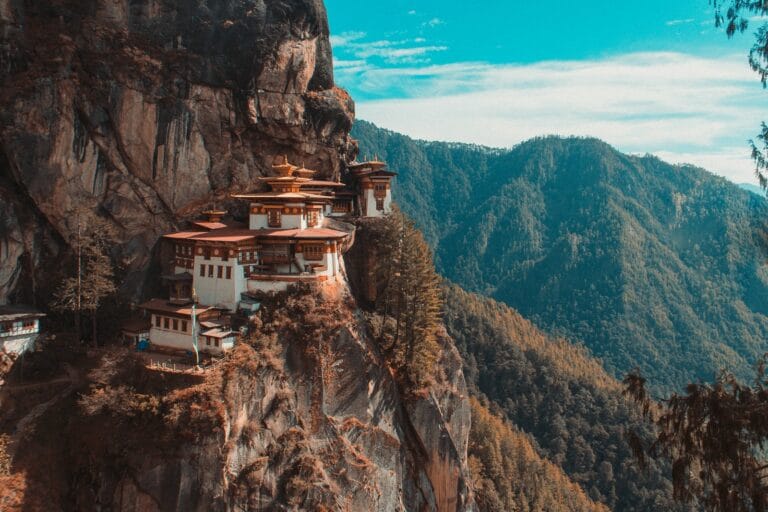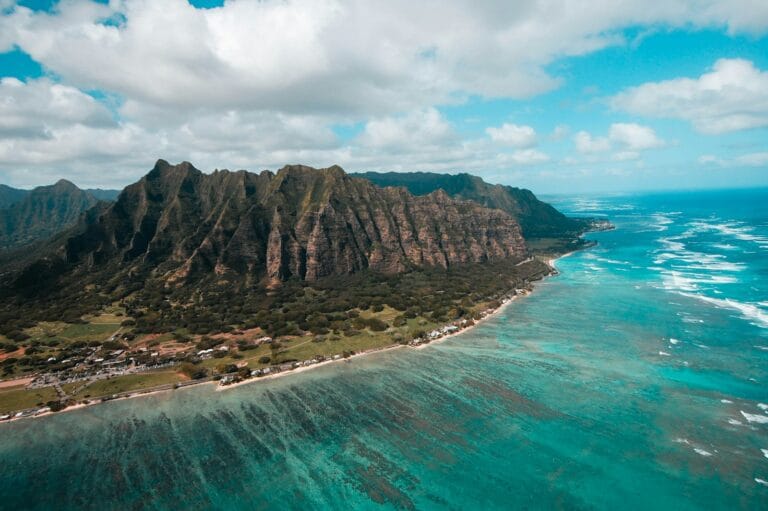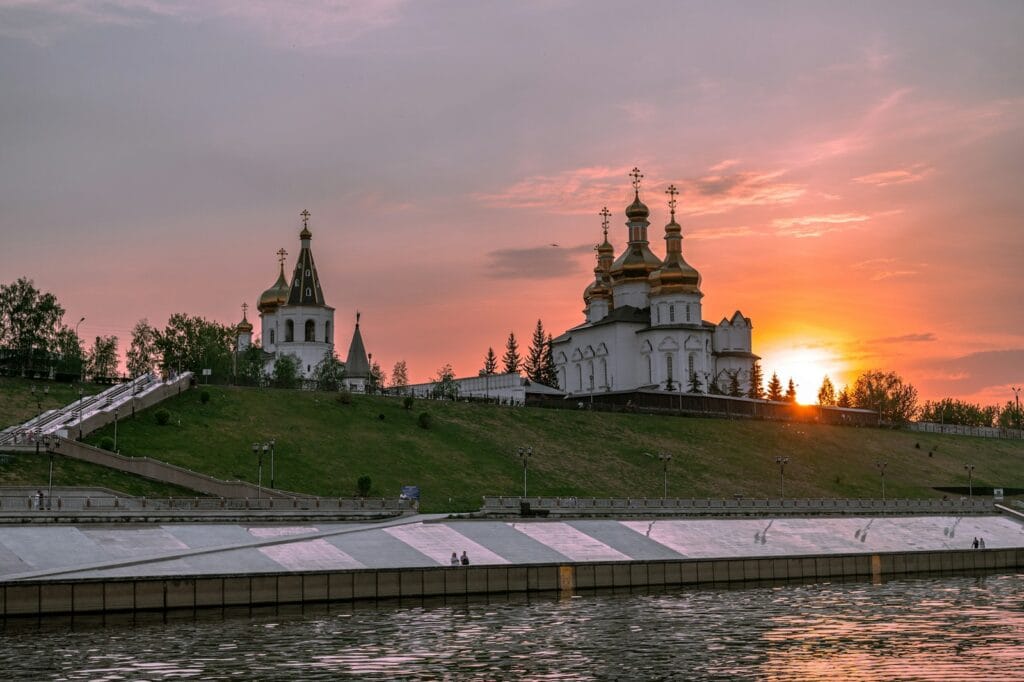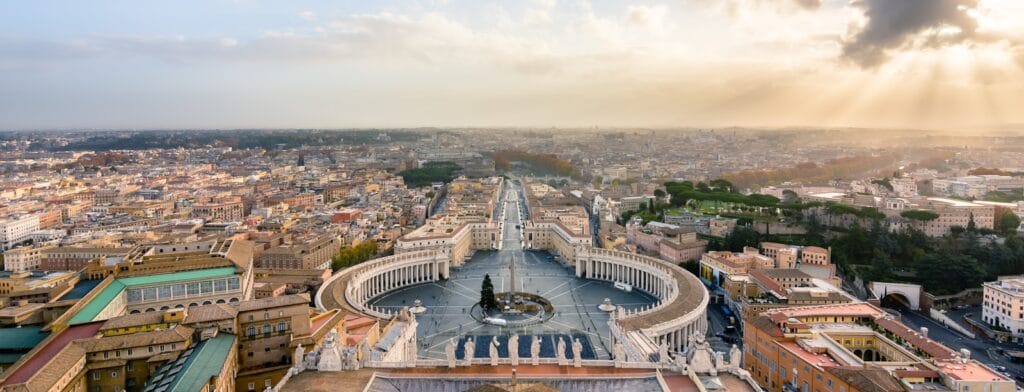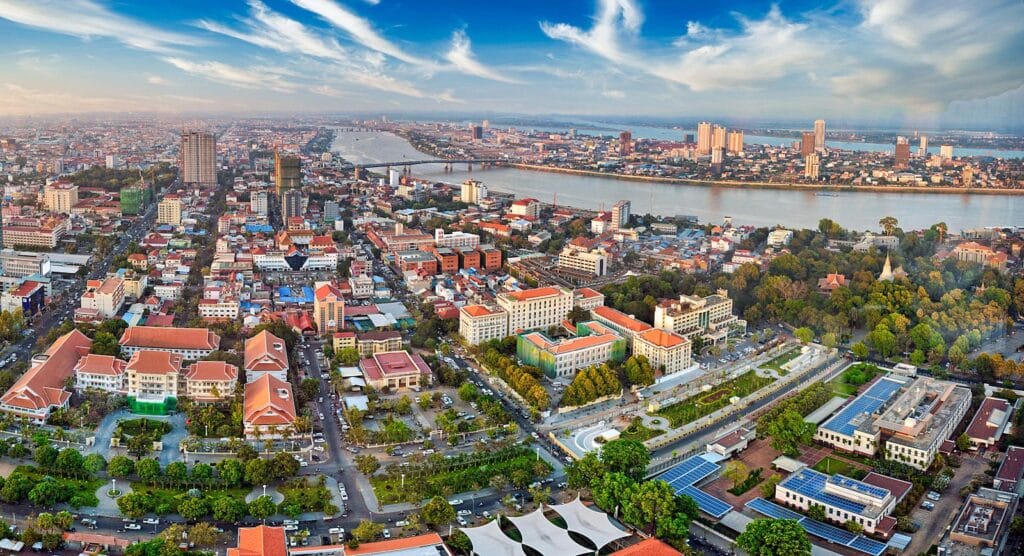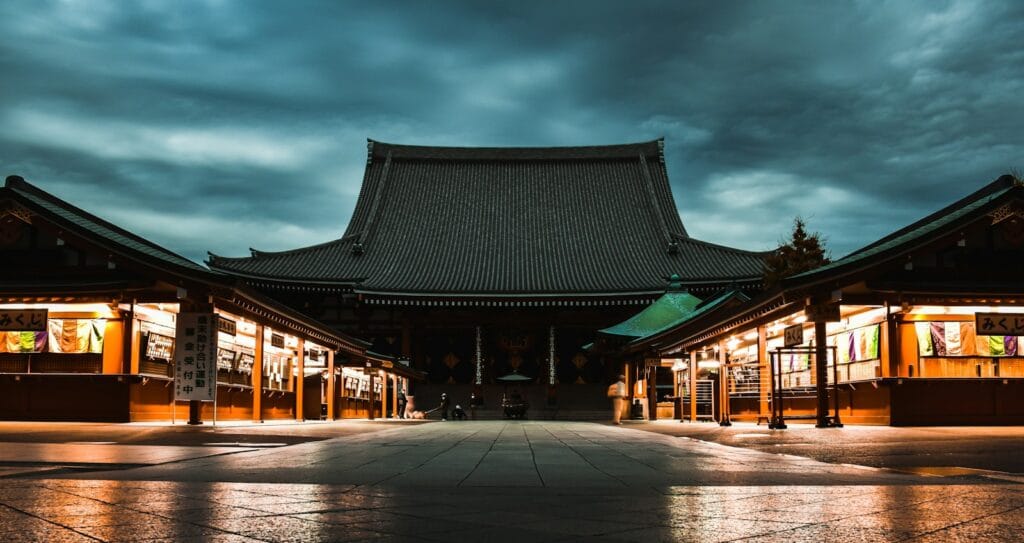Poland Travel Guide: Castles, Culture & Surprising Beauty
From medieval towns and fairy-tale castles to modern cities and haunting forests, Poland is a country of contrasts and enduring charm. It’s where hearty pierogi meets sleek high-speed trains, and cobblestone old towns rub shoulders with post-industrial art spaces. Whether you’re drawn to World War II history, Baltic beaches, or mountain trails, Poland offers depth, diversity, and value in every direction.
Start planning with curated Poland tours, day trips, and cultural experiences — crafted for first-timers, heritage travelers, and curious wanderers.
💡Quick Facts:
Destination: Poland
Continent: Europe
Country: Poland (Country)
Area: 312,696 km²
Population: ~37.7 million
Density: ~121 people/km²
Capital: Warsaw
Regions/Subregions: Mazovia, Lesser Poland, Silesia, Pomerania, Greater Poland, Kuyavia, Warmia-Masuria
Language(s): Polish (official); English and German spoken in tourist areas
Currency: Polish Zloty (PLN)
Time Zone(s): Central European Time (CET, UTC+1); Central European Summer Time (CEST, UTC+2 in DST)
Airports: Warsaw Chopin (WAW), Kraków John Paul II (KRK), Gdańsk Lech Wałęsa (GDN), Wrocław Copernicus (WRO), Katowice Pyrzowice (KTW)
Climate: Temperate continental — cold winters, warm summers
Known For: Medieval cities, WWII history, pierogi, Baltic coast, Białowieża Forest, castles, Chopin
🛂Arrival Info:
– EU/EEA and Schengen citizens: visa-free
– U.S., Canada, Australia: visa-free for up to 90 days within 180 days
– Others: may require a Schengen visa → Poland Visa Info
– Visa-on-arrival: Not available
– Passport must be valid for at least 3 months beyond departure
💉Health Info:
– No mandatory vaccines
– Recommended: Hepatitis A, Hepatitis B, Tetanus, Tick-borne encephalitis (for rural/hiking regions)
– COVID-19: No entry restrictions as of 2025
– High standard of healthcare in major cities like Warsaw, Kraków, Gdańsk
✅ Check travel insurance options for travel emergencies, delays, and medical needs abroad — get coverage here
✅ Stay Informed with Official Updates: World Health Organization – International Travel and Health | Travel health updates
🚨Travel Advisory:
– Generally safe, low crime rate
– Exercise normal precautions
– Avoid political protests or gatherings
– No current internal conflict or regional restrictions
✅ Stay Informed with Official Updates: US Travel Advisory | UK Foreign Travel Advice
📅Holidays:
– May 3: Constitution Day – national pride, parades
– November 11: Independence Day – military ceremonies
– December 25-26: Christmas – widespread closures
– April (varies): Easter – limited transport/services
– August 15: Assumption Day – religious observances
💰Money Matters:
– Currency: Polish Zloty (PLN)
– ATMs widely available; best rates via ATMs or exchange offices (avoid airport kiosks)
– Cards accepted in most places; carry cash for rural towns or markets
– Tipping: 10% in restaurants; round-up for taxis
– Duty-Free: 200 cigarettes, 1L spirits, 2L wine allowed (non-EU travelers)
✈️Airports:
– Warsaw Chopin Airport (WAW): Main international gateway
– Kraków John Paul II (KRK): Major hub for southern Poland
– Gdańsk (GDN), Wrocław (WRO), Katowice (KTW): Serve regional and international flights
– Budget carriers (Ryanair, Wizz Air) operate widely
✅ Delayed or canceled flight? Check if you’re eligible for compensation
🚍Transport:
– Trains (PKP Intercity, Pendolino) connect major cities
– Long-distance buses (FlixBus, PolskiBus) are reliable
– Local transit: trams, metros (Warsaw only), buses
– Taxis: Use apps like Bolt or FreeNow; avoid unmarked cabs
– Drive on the right; IDP required for some non-EU licenses
✅ Book reliable airport transfers and in-city rides in advance. Reserve your ride here
📶Connectivity:
– SIM cards: Orange, Play, Plus – widely available
– eSIM options: Airalo, Nomad support Polish networks
– 4G coverage is strong in cities; 5G available in Warsaw, Kraków
– Free Wi-Fi in cafés, hotels, malls; avoid public network risks
✅ Stay connected abroad with affordable eSIM data packs. Get your eSIM here
📜Laws & Etiquette:
– Legal drinking age: 18
– Public drunkenness frowned upon
– LGBTQ+ rights are improving; some conservative attitudes outside cities
– Dress modestly in churches; cover shoulders
– Taboos: don’t compare Poland to Russia or Soviet history lightly
🛡️Emergency Info:
– Emergency: 112 (all services)
– Police: 997 | Ambulance: 999 | Fire: 998
– Travel insurance strongly recommended, especially for outdoor travel
✅ Use embassy locator tools: Embassies Worldwide
🌦️Weather:
– Spring (Mar–May): Blooming parks, variable temps (10–20°C)
– Summer (Jun–Aug): Warm (20–30°C), ideal for cities and lakes
– Autumn (Sep–Nov): Colorful, cool (10–15°C)
– Winter (Dec–Feb): Cold/snowy (0 to -10°C), great for Christmas markets
– Best time: May–June, September
✅ Stay prepared—check the weather forecast for your destination — Weather Forecast
Poland by Region – Where to Go
Explore Poland’s diverse landscapes and cities by region — from cultural gems to wild escapes.
Lesser Poland (Małopolska)
Kraków is the centerpiece here, with its Gothic churches, Rynek Główny (Europe’s largest medieval square), and poignant side trips like Auschwitz-Birkenau. The region is also home to Zakopane and the Tatra Mountains — ideal for hiking or skiing depending on the season.
Masovia (Mazowieckie)
Warsaw, the capital, dominates this central region with its post-war rebuilds, lively cultural scene, and green spaces like Łazienki Park. Outside the city, discover rural wooden churches, traditional Polish villages, and the Vistula River’s serene banks.
Pomerania (Pomorskie)
This northern coastal region borders the Baltic Sea and includes the historic port city of Gdańsk — known for its amber markets and World War II heritage. Sopot and Gdynia offer beaches, nightlife, and sailing adventures.
Silesia (Śląskie)
Katowice leads Poland’s former coal-mining region, now transformed into a hub for design, music, and innovation. Visit the Silesian Museum, take a coal mine tour, or explore the Beskid Mountains for hiking and spa towns like Wisła.
Lower Silesia (Dolnośląskie)
Wrocław’s island-filled Old Town charms with colorful architecture and hidden gnomes. Nearby, Książ Castle and the Table Mountains offer great day trips. This region is also dotted with mineral spas and vineyards.
Podlachia (Podlaskie)
An eastern gem blending Polish, Belarusian, and Lithuanian cultures. Explore Białowieża Forest — one of Europe’s last primeval woodlands, home to bison — and charming Orthodox villages like Supraśl.
Warmia-Masuria (Warmińsko-Mazurskie)
Known as the “Land of a Thousand Lakes,” this northern region is paradise for sailors, kayakers, and slow travelers. Olsztyn and Giżycko offer bases for lake-hopping, forest walks, and castle ruins.
Top Places to Visit in Poland
From timeless cities to outdoor escapes, these are the places you can’t miss.
Cultural Capitals
- Kraków – With Gothic towers, Jewish heritage, and underground salt mines, Kraków is one of Europe’s most walkable and rewarding cities.
- Warsaw – A phoenix city reborn after WWII, Warsaw blends neoclassical palaces with edgy murals, pierogi joints, and rooftop views.
- Wrocław – This underrated gem boasts over 100 bridges, quirky bronze gnomes, and a buzzing café scene on Cathedral Island.
Nature Escapes
- Tatra Mountains – Towering peaks, alpine lakes, and shepherd huts in southern Poland. Base in Zakopane for cable cars and trekking.
- Białowieża Forest – Hike through this UNESCO-listed forest and spot European bison roaming freely in a magical, mossy landscape.
- Masurian Lakes – Paddle, camp, or sail through Poland’s most peaceful natural playground.
Historic Sites
- Auschwitz-Birkenau – A sobering but essential visit, offering deep historical reflection through its preserved barracks and exhibits.
- Malbork Castle – Europe’s largest brick fortress built by the Teutonic Knights, located near Gdańsk.
- Torun – A Gothic-era town and the birthplace of Copernicus, full of medieval architecture and gingerbread legends.
Coastal and Island Escapes
- Gdańsk – Amber alleys, maritime museums, and Hanseatic facades make this a highlight of the Baltic coast.
- Sopot – Poland’s most famous beach resort, with a long wooden pier, art nouveau villas, and laid-back seaside energy.
- Hel Peninsula – A narrow sandbar jutting into the sea, perfect for cycling, windsurfing, and seafood.
How to Choose Where to Go in Poland
Build your perfect itinerary based on travel goals and pairings.
- For history and architecture, focus on Kraków, Wrocław, and Torun. Pair old towns with local museum tours or WWII landmarks.
- For nature and outdoor adventure, combine the Tatra Mountains with Masuria’s lakes or Białowieża Forest’s rare wildlife.
- If you love coastal vibes, do a loop through Gdańsk, Sopot, and the Hel Peninsula — ideal in summer.
- For a mix of urban buzz and relaxation, blend Warsaw’s energy with spa towns in Lower Silesia or the quiet lakes of Warmia-Masuria.
How to Get Around Poland
Poland has excellent infrastructure and affordable transport options.
Trains & Long-Distance Buses
Polish Rail (PKP Intercity) connects major cities with fast and reliable service. Buses like FlixBus and Polonus are perfect for budget travel between towns.
Domestic Flights
LOT Polish Airlines and Ryanair offer short hops — helpful for Gdańsk-to-Kraków or Warsaw-to-Wrocław in a pinch.
Car Rentals
Renting a car is best for exploring the countryside or remote regions like Podlachia or the Bieszczady Mountains. Roads are good, but parking in cities can be tricky.
Urban Transit
Trams, metros (in Warsaw), and buses are cheap and efficient. Use apps like Jakdojade for real-time planning. Bike-sharing and Uber are also widely available.
Travel Budget & Costs in Poland
Poland remains one of Europe’s best-value destinations.
Average Daily Costs
– Budget: $30–$50/day (hostels, local meals, intercity bus)
– Mid-range: $60–$120/day (3-star hotels, restaurant meals, train)
– Luxury: $150–$250/day (4–5 star stays, fine dining, guides)
Sample Prices
– Pierogi meal: $6–$10
– Museum entry: $3–$8
– Train Kraków–Warsaw: $20–$40
– City tram ticket: ~$1
– Hotel (mid-range): $60–$100/night
Cost-Saving Tips
Use Poland’s excellent public transport, dine at milk bars (bar mleczny), buy city cards for free entries, and travel shoulder seasons for better rates.
Best Time to Visit Poland
Timing depends on your preferred weather and activities.
Spring (April–June)
Mild weather, blooming parks, and fewer tourists. Ideal for city walks and rural drives.
Summer (July–August)
Warmest months with festivals like Open’er (music) and Wianki (Kraków’s midsummer celebration). Best for beaches and lakes.
Autumn (September–October)
Golden foliage, crisp air, and fewer crowds. Great for hiking and harvest festivals.
Winter (November–February)
Snowfall in the mountains and Christmas markets in cities. Visit Zakopane for skiing or Kraków’s magical winter scenes.
Must-See Experiences in Poland
Unlock unforgettable things to do in Poland with these one-of-a-kind adventures.
Cultural and Historical Tours
– Explore Warsaw’s reconstructed Old Town and WWII sites
– Walk Kraków’s Jewish Quarter and visit Schindler’s Factory
– Tour medieval castles like Wawel and Malbork
Nature & Outdoor Activities
– Hike to Morskie Oko in the Tatra Mountains
– Kayak along the Krutynia River
– Bike the Hel Peninsula and coastal dunes
Local Festivals and Events
– Pierogi Festival (August, Kraków)
– All Saints’ Day cemetery candlelight vigils
– Wianki Festival (midsummer, folk traditions and concerts)
Immersive Food & Market Tours
– Try vodka and herring pairings in Warsaw
– Join Kraków’s street food crawl through Kazimierz
– Visit Wrocław’s Hala Targowa market for pastries and produce
Book immersive Poland tours and experience unforgettable things to do in Poland — from sacred salt mines and forest hikes to music festivals and Old Town feasts.
Best Travel Itineraries in Poland
Use these sample itineraries to simplify planning — whether you’re here for a week or two.
7-Day Classic Highlights Route
Warsaw → Kraków → Wieliczka → Zakopane
– Spend 2 days exploring Warsaw’s museums and Old Town
– Take a fast train to Kraków for 2–3 days of castles, churches, and pierogi
– Do a half-day trip to the Wieliczka Salt Mine
– Head south to Zakopane for Tatra hikes and mountain charm
10-Day North-to-South Route
Gdańsk → Toruń → Warsaw → Kraków → Tatra Mountains
– Begin in coastal Gdańsk (2 days), then continue to medieval Toruń (1 day)
– Explore Warsaw’s contrasts for 2 days
– Travel south to Kraków and then Zakopane for nature escapes
2-Week Off-the-Beaten-Path Route
Wrocław → Bieszczady Mountains → Lublin → Białowieża Forest → Gdańsk
– Start in colorful Wrocław and nearby castles
– Venture east to the remote Bieszczady for hiking and hidden villages
– Stop in Lublin (Jewish heritage) and Białowieża Forest (bison sightings)
– End with a few relaxing days on the Baltic coast
Local Cuisine & Culinary Experiences
Food in Poland is hearty, regional, and always better than you expect.
Must-Try Dishes
– Pierogi: Stuffed dumplings with savory or sweet fillings — everywhere, but especially good in Kraków and Warsaw
– Bigos: Hunter’s stew made of sauerkraut, meat, and mushrooms — best in winter or rural regions
– Żurek: Sour rye soup often served in a bread bowl — try in Kraków
– Placki ziemniaczane: Crispy potato pancakes, sometimes served with goulash
– Gołąbki: Stuffed cabbage rolls — hearty and homey
– Oscypek: Smoked sheep cheese from the Tatra Mountains
– Pączki: Jelly-filled donuts eaten during “Fat Thursday” but found year-round
Unique Dining & Food Tours
– Bar Mleczny (milk bars): Cheap, nostalgic canteens from the communist era
– Street food hubs: Zapiekanka stands in Kraków’s Kazimierz district
– Vodka tasting tours: Sample bison grass, cherry, or hazelnut varieties
– Floating restaurants: Try riverfront dining in Wrocław or Gdańsk
Taste your way through Poland with food tours, pierogi workshops, and traditional tastings in Old Towns and countryside homes.
Travel Safety & Cultural Etiquette in Poland
Poland is safe and welcoming, but knowing a few customs enhances your trip.
Safety Tips
– Pickpocketing is rare but possible in crowded areas like stations or festivals
– Tap water is drinkable in cities, but bottled is preferred in rural areas
– Roads are well-maintained, but be cautious on rural night drives
Cultural Etiquette
– Handshakes are common; be polite and use titles (e.g., Pan, Pani) if unsure
– Take shoes off in homes; gifts like flowers or wine are appreciated
– Silence is respected on public transit — keep phone use discreet
– In churches or memorials, dress modestly and avoid loud behavior
Language and Behavior
– Polish is the official language; English is spoken in most cities
– Learning basic greetings (like Dzień dobry) earns smiles
– Avoid comparing Poland to other countries, especially regarding WWII
Where to Go Next – Pair Poland with These Destinations
Extend your trip with these great regional combos.
– Czech Republic: Just a few hours from Wrocław or Kraków; Prague’s charm pairs beautifully with Poland’s castles
– Slovakia: Share the Tatra Mountains with Poland — great for dual hiking adventures
– Lithuania: Easy flights or trains to Vilnius from Warsaw; explore shared history and architecture
– Germany: Visit Berlin after Gdańsk or Poznań — both are direct rail hubs
Related country guides, inspiration for Your Next Adventure:
Final Planning Checklist for Poland
Before departure, use this checklist to stay organized and travel smart.
- Finalize your route: major regions, city bases, and side trips
- Reserve top accommodations and high-demand tours (like Auschwitz or Zakopane hikes) in advance
- Download offline maps, Jakdojade (transit), and Polish language basics apps
- Verify passport validity, visa-free rules (for most Western countries), and insurance coverage
- Consider buying an eSIM or Polish SIM for better data and maps
- Pack layers for changeable weather — even summers can be cool inland
- Back up passports, tickets, and COVID documents digitally and on paper
- Learn a few Polish phrases and basic etiquette to connect better with locals
Explore Poland with Confidence
From world-class cities to quiet lakes, Poland rewards deep exploration and slow travel. Whether you’re chasing WWII history, Gothic skylines, hearty dishes, or open-air trails, the country offers a balance of meaning, beauty, and value.
For more expert travel tips, practical strategies, and trusted tools — visit our Homepage and get inspired for your next trip.

